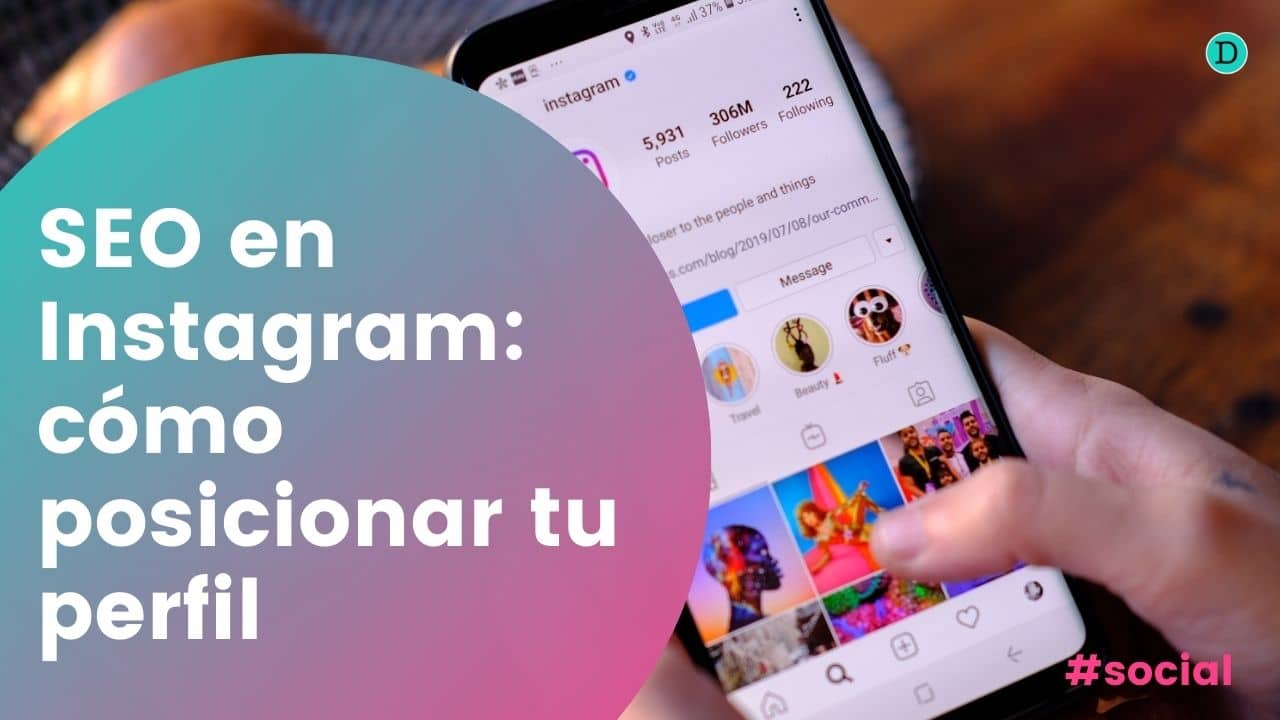If you have a blog, but the visits are conspicuous by their absence, it's time to talk seriously about how to increase the visibility of your blog.
Because, let's face it, there's no point in writing the best content if no one can find it on Google. That's where the SEO comes into action, your best ally in getting out of the dark corner of the internet and appear in the first search results.
Think about the SEO as GPS that guides readers to your blog. With the the right strategy, more people will find you, they will read your content Sounds good, doesn't it? Well, read on, we are going to tell you how to take your blog from being an unknown to being among the top positions in the search engine.
What is SEO and how does it work?

I'm sure you've heard of SEO (Search Engine Optimisation)But let's put it down in a clear way.
In short, the SEO is the set of strategies that help you to improve your visibility on search engines such as Google. If you apply it well, your blog has a better chance of appear in the first results when someone is looking for information on your subject.
However, Google does not choose who comes first just for the sake of it. Its algorithm analyses hundreds of factors before deciding which content deserves to be at the top. To make it easier, SEO is divided into two main groups:
On-Page SEO: what you do within your blog
That's all you can optimise directly on your site to improve its positioning. This is where they come in:
- Key words: use them strategically in titles, meta-descriptions and content, it helps Google understand what your blog is about.
- Quality of content: it is not enough to write a lot, it has to provide value and respond to what the user is looking for.
- Structure of the blog: Friendly URLsattractive meta descriptions and correct use of headings (H1, H2, H3...).
Off-Page SEO: what's happening outside your blog
This is where the external factors that influence your positioningsuch as:
- Backlinks: when other sites link to your blog, Google sees it as a sign of trust and authority.
- Social networking: sharing your content and generating interaction also helps to improve its visibility.
- Collaborations: guest posting on other blogs or partnering with industry influencers adds up.
So how does it all work?
Google crawls millions of pages with its bots, indexes them in its database and then, when someone searches for something, shows the most relevant results. So that your blog appears at the top of the rankingsyou need to prove to Google that your content is the best. And that's where a good SEO strategy makes all the difference.
Now that you know how it works, in the next point we tell you how to apply these keys to help your blog gain visibility and attract more visitors.
Benefits of SEO to improve your blog's visibility

Investing in SEO is not just a question of fashion, it is a question of key strategy to grow a blog in a sustainable way.
It's not just about attracting visitors, it's about generate quality traffic that is genuinely interested in your content. Here, we tell you about the main benefits that SEO can bring to your blog.
Increased visibility and organic traffic
The first major benefit of SEO is that improves the visibility of a blog in search engines.
How much the better optimised your content is, the higher you will appear on Google and the more likely people are to click on your blog. And best of all, this traffic is organic, i.e. it's organic, you don't need to pay for ads to attract visitors.
Authority and credibility in your sector
Appearing in the first results of Google not only gives you more visibility, it also gives you reinforces your image as an expert.
People have more trust in the blogs that rank well because Google has already done the job of filtering out relevant information. This is especially important if your blog is part of a business, as it helps to building trust with potential customers.
More monetisation opportunities
A well-positioned blog can become a source of income. Either through advertising, affiliate marketing, partnerships with brands or sale of products and servicesSEO helps you to generate qualified traffic, which translates into more monetisation opportunities.
Better user experience
The SEO is not just a question of keywords and links, it also involves optimise the user experience.
A fast, easy-to-navigate blog with relevant content retains visitors for longer, which increases the likelihood of them interacting with your content and come back in the future.
In short, the SEO is the best strategy to grow a blog sustainably. If you apply the right techniques, not only will you gain traffic, but you will also you will build a loyal audience and generate real opportunities for your project.
Keys to improve the SEO of a blog

You know that the SEO is key to increase the visibility of a blogBut how can it be applied effectively?
It's not just a matter of using random keywords, but also of follow a well-structured strategy. Here are the fundamental pillars for improve the positioning of your blog and attract more quality traffic.
Keywords: the basis of SEO
The keywords are the terms that users type in Google to find information. Choosing the right ones is essential for your blog to appear in the right results.
How to choose the right ones?
- Use tools such as Google Keyword Planner, SEMrush o Ahrefs to find terms with good search volume and moderate competition.
- Opt for long tail keywords (more specific and longer phrases) that have less competition and attract more qualified traffic.
- Don't overuse keywords. Use them naturally in titles, subtitles and within content without forcing.
Optimised content: more than just writing
Google rewards blogs that offer useful, original and well-structured content. To make your content perform well in SEO, follow these keys:
- Responds to the search intention. Before writing, ask yourself what the user wants to find when searching for that keyword.
- Create scannable content. Use short paragraphs, clear subheadings, lists and bold type for ease of reading.
- Add images, videos and infographics. Visual content improves the user experience and reduces bounce rate.
- Update your articles. Google favours fresh content, so review and improve your posts from time to time.
Technical SEO: don't ignore it
The Technical SEO is what makes your blog function well at the structural level. It may seem complex, but there are some basic points to take care of:
- Loading speed. A slow blog drives visitors away. Use tools like PageSpeed Insights to measure speed and optimise images and unnecessary code.
- Responsive design. Your blog should look good on all devices, especially on mobile.
- Clean URLs. Avoid long and confusing links. A good structure would be: tublog.com/main-topic-article-topic
- Attractive meta-descriptions. They are the text that appears in Google below the title. They should be short, clear and contain the keyword.
- ALT tags in images. Describe the content of your images with keywords to improve SEO.
Linkbuilding: the power of links
Links are essential to ensure that Google determine the authority of your blog. There are two main types:
- Internal links: are those that connect different articles within your own blog. They help to improve navigation and distribute authority between pages.
- External links (backlinks)links: these are the links that other sites put to your blog. The more quality links you receive, the more trust you generate in Google.
How to get quality backlinks?
- Create content that others want to share. Full articles, studies, guides and case studies often attract links.
- Collaborate with other blogs. Guest posting on relevant sites can generate natural links.
- Avoid low quality links. Don't buy backlinks or use dubious techniques, as Google penalises these practices.
In short, improving the visibility of a blog is not a one-day task, but with the appropriate SEO strategiesresults are coming.
The SEO doesn't just increase trafficIt also helps you position yourself as an authority in your field, attracts a more qualified audience and generates new opportunities for your business.
Applying the keys that we have seen, from the keyword selection to linkbuildingyou can take your blog to new heights. Remember, the SEO is a long-term investmentBut if you work at it with patience and strategy, the fruits will not be long in coming.





